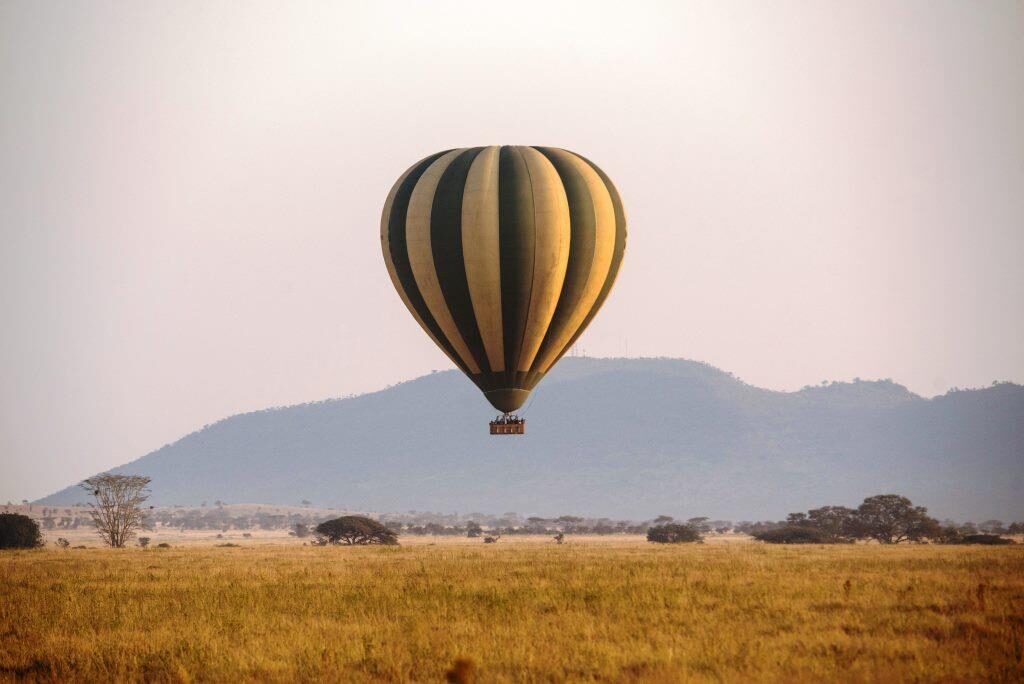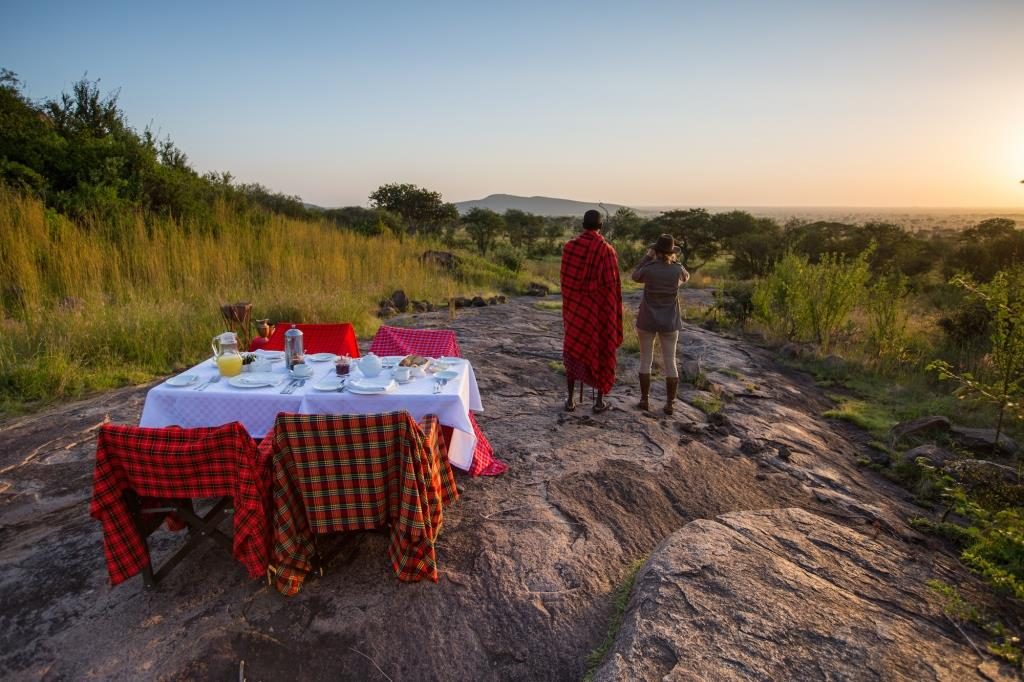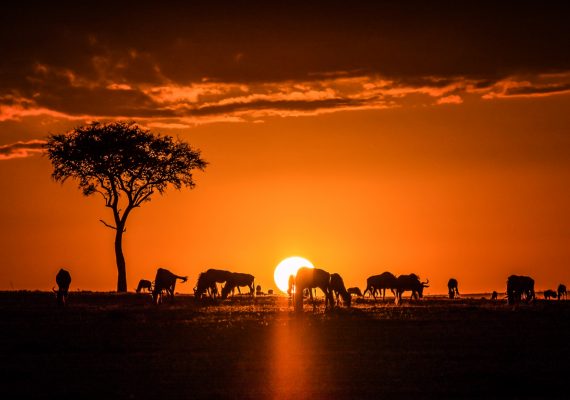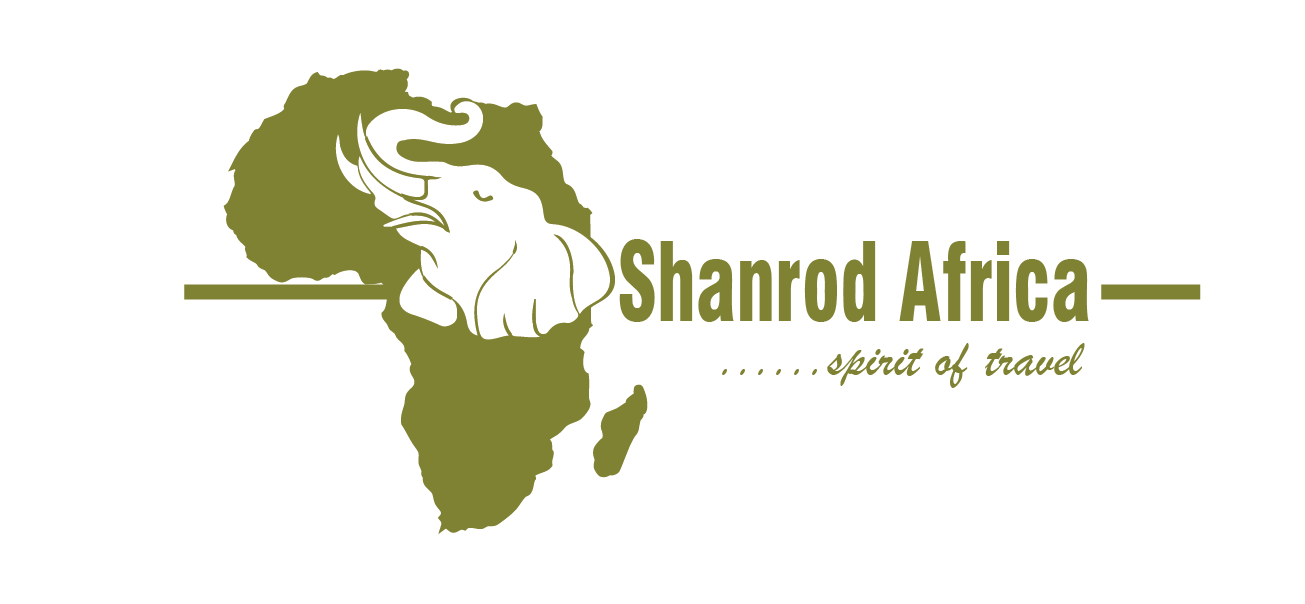Recognized as a World Heritage Site, Serengeti National Park is one of the most famous wildlife areas in the world and is considered the world’s oldest protected eco-system. Serengeti National Park, as we know it today, was gazetted in 1951, but a smaller area first received protection between 1921-29 by the British to prevent decimation of the lion population from hunting. The park itself is 5,700 square miles, but the more extensive Serengeti eco-system is over 9,600 square miles of protected land from Ngorongoro all the way to Loliondo and Kenya (the smaller Maasai Mara) and including the Maswa Game Reserve on the southern boundary of the park.
 The Serengeti is the largest national park in Tanzania, with a staggering animal population of almost four million and 523 recorded species of birds! It is the largest wildlife sanctuary in the world and the site of one of the most breathtaking events in animal kingdom-the migration of more than 1.4 million wildebeest and another 250,000 zebra. The area consists of treeless central plain, savannah dotted with acacia and granite outcroppings called kopjes, and riverine bush and forest in the north. The famous “Migration” that people dream to experience is actually a dynamic process taking a full year to complete. There are different ‘events’ that happen at different times of the year and in different locations in this park; calving, rut and river crossings. The basic migration occurs in a clock-wise direction but is guided by rain and the growth of grass, so at any time the animals can ignore “tradition” and just follow rain clouds in a more haphazard direction.
The Serengeti is the largest national park in Tanzania, with a staggering animal population of almost four million and 523 recorded species of birds! It is the largest wildlife sanctuary in the world and the site of one of the most breathtaking events in animal kingdom-the migration of more than 1.4 million wildebeest and another 250,000 zebra. The area consists of treeless central plain, savannah dotted with acacia and granite outcroppings called kopjes, and riverine bush and forest in the north. The famous “Migration” that people dream to experience is actually a dynamic process taking a full year to complete. There are different ‘events’ that happen at different times of the year and in different locations in this park; calving, rut and river crossings. The basic migration occurs in a clock-wise direction but is guided by rain and the growth of grass, so at any time the animals can ignore “tradition” and just follow rain clouds in a more haphazard direction.
Serengeti National Park hosts one of the largest and most diverse large predator-prey interactions worldwide, providing a particularly impressive aesthetic experience.
The Serengeti plains harbor the largest remaining unaltered animal migration in the world where over one million wildebeest plus hundreds of thousands of other ungulates engage in a 1,000 km long annual migration spanning the two adjacent countries of Kenya and Tanzania.
The area borders the Ngorongoro Conservation Area, all 5280 km2 of which was declared a World Heritage Site in 1979. The herds tend to congregate and calve in the southern part of Serengeti from January to March, before beginning the northern trek into the northern Serengeti plains and the Masai Mara in Kenya before looping back again – this leg of the epic journey occurring between April and December.
 A dramatic volcanic and verdant landscape, the Serengeti is a permanent home to a plethora of other wildlife which can be viewed year-round. One of the few remaining places to view black rhino in its natural habitat, the Serengeti offers the chance to view all of the Big 5. Its abundance of animals has seen the Serengeti as the subject of and location for many wildlife documentaries over the years.
A dramatic volcanic and verdant landscape, the Serengeti is a permanent home to a plethora of other wildlife which can be viewed year-round. One of the few remaining places to view black rhino in its natural habitat, the Serengeti offers the chance to view all of the Big 5. Its abundance of animals has seen the Serengeti as the subject of and location for many wildlife documentaries over the years.
Wildlife
All the classic big game animals of Africa are found in the Serengeti. Of recent importance are re-introduction programs for black rhino and Cape hunting dogs. The black rhino is being introduced in the north and south of the Park while hunting dogs are beginning to spread throughout.
Activities
• Game viewing by vehicle
• Walking safaris
• Ballooning is now possible in the north, south and center of the Park
When to go
The Serengeti is a year-round destination with access to all parts throughout the year.
Getting there
Air. There are all weather airstrips in the center at Seronera, in the south at Kusini, in the east at Lobo, in the west at Kirawira and in the north at Kogatende and Lamai. These airstrips are used by scheduled and private charters.
Road. Access is only possible through established entry points which are at Naabi Hill, Seronera, Ndutu, Kusini, Kirawira, Handajega, Ikoma, Tabora ‘B’, Lamai, Kleins. All entry fees are paid online through the Park HQ, and all entry points and the HQ are interconnected through the internet.
Safari ideas
The Serengeti is on almost everyone’s wish list for a safari to Tanzania, but one can only absorb the full extent of Tanzania’s extraordinary depth and character as a safari destination by including other places in one’s travels. The rugged wilderness of the southern and north western Parks, and the joys of Lakes Victoria and Tanganyika are a wonderful contrast.
When in Serengeti you may visit Fort Ikoma a German fort that was set up at the end of the 1890’s to spread the German influence in the Northern part of German East Africa. The Fort is situated on top of the most easterly of a series of low hills about one mile north of the Grumeti River.
The first European to set foot in the area was the German explorer and naturalist Dr. Oscar Baumann, who passed by as an agent of the German Anti-Slavery Committee on his way to Burundi in 1892. Baumann wasin fact the first European to visit both Ngorongoro and the Serengeti together with his compatriots who built the Fort. The Fort was used as an administrative centre and a military outpost until it fell to the British in 1917as the Germans were forced to retreat from what is nowTanzania during the World War I.
Popular Tanzania Safaris







